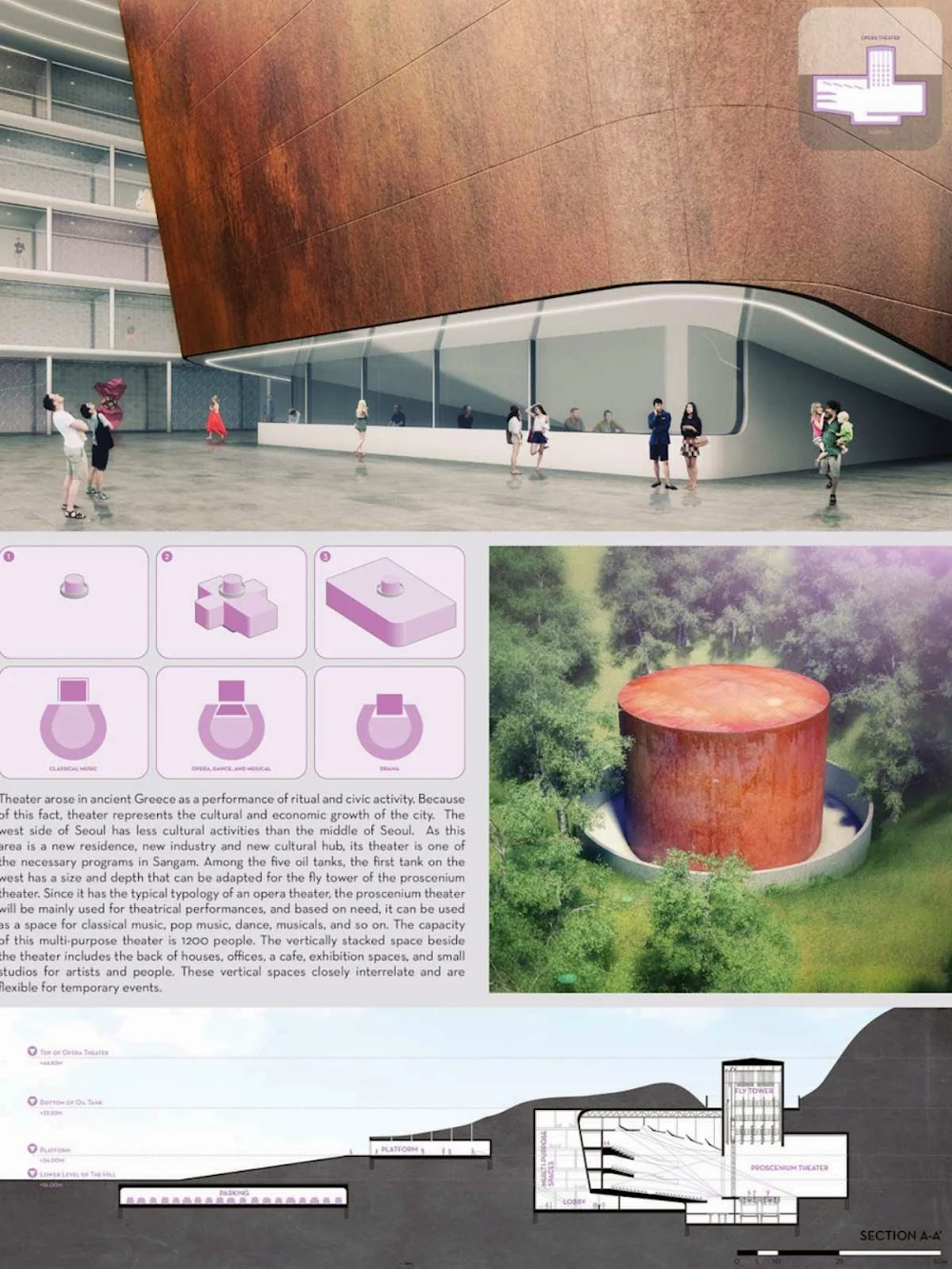
Sangam was a last void in the northwest of Seoul until the 2002 World Cup became the critical catalyst to change this site.

This abandoned area filled with waste was changed into an ecological park, Digital Media City, and World Cup Stadium. the site was the last piece of unproductive terrain in this area. Sangam’s remaining land must be returned to the citizens.

Lots of existing projects related brown field lands already showed how abandoned lands could be productive. the answer from more than 90% of projects was a park.

A park is always a simple and persuasive answer, but it is not the right answer for this site. A park cannot create new productive value from the site, because Mapo Oil Reserve Base has special conditions.

Most of all, the site is already surrounded by many parks. Thus, the site must produce another sort of value. the second condition is that the site is located in a new town development of northwest Seoul.

This area lacks enough infrastructure for recreational and cultural activities, unlike other parts of Seoul. People who live in this area want new activities to enjoy their life, other than simply nature.

The site is a perfect location to add new activities. As a new infrastructure for leisure, the site has great potential as a productive area for citizens.

Based on these points, the project ‘Hidden Gem’ has been developed from the following questions; how can five oil tanks be transform to embed recreational programs and how can multiple programs interrelate and operate with each other?

There are five programs: opera theatre, museum, Ferris wheel, climbing centre, and a diving pool & spa. Each of these programs will be located on each of the oil tanks and operated by a main platform.

In addition, the Necklace (the world’s largest spokeless Ferris wheel) will stand on the site as vertical landmark. People will be able to look out at Seoul’s skyline from the Necklace. Like handcrafted gems, the oil tanks will become productive spaces with new value through these diverse architectural interventions.
Location: Seoul, Korea Architect: Hyuntek Yoon of Nooyoon Status: Competition Entry Year: 2013